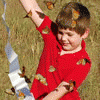DIY Butterfly Release
-
-
Posts
-
By katelynmseng · Posted
[URL=https://best.datingx.live] Dating for Sex. [/URL] [URL=https://en.adultgame.life] Most realistic porn game[/URL] -
By katelynmseng · Posted
[URL=https://adult.casualdate.live] Explore Dating for Sex. [/URL] -
By katelynmseng · Posted
[URL=https://datingnow.site]Meet Women Who Want to Enjoy a Night of Passion Tonight in Your City[/URL] Exemplary Сasual Dating https://datingnow.site -
By katelynmseng · Posted
[URL=https://datingnow.site]Casual Encounters Made Easy in Your City[/URL] -
By katelynmseng · Posted
NON NUDE FREE JAILBAIT FORUM ВЕБСАЙТ: ОТКРЫВАЙТЕ ТОЛЬКО В АНОНИМНОМ ТОР БРАУЗЕРЕ (В ДРУГИХ БРАУЗЕРАХ ССЫЛКА НЕ РАБОТАЕТ) http://torx5mtxatfovjmdizm27tsqusa4bgej5qx7zvv2quxvh44spl5xzsad.onion МАГНЕТ ССЫЛКА 218ГБ ВИДЕО ДЛЯ ТОРРЕНТ КЛИЕНТА: magnet:?xt=urn:btih:abd5aaed52b5994fe54136701c4c18156bd28415
-
-
Topics









Recommended Posts
Join the conversation
You can post now and register later. If you have an account, sign in now to post with your account.